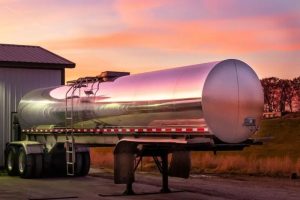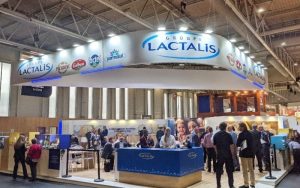
It dominates global export markets, with more than $7 billion of whole milk exports last year. And with possible farm gate payouts now estimated at an all-time high of over $8.75 to $10.25 a kilo, arguably things have never looked better.
Brand New Zealand is very strong in milk. At the height of the melamine milk powder crisis in China, people were queueing out the door for New Zealand baby milk formula.
Fonterra has plenty of high-value science, too. It has perhaps the best understanding of the intricacies and possibilities of milk proteins of anyone, anywhere.
And let’s not forget that all this is because dairy farmers get up early and work extremely hard. We have much to be grateful for.
But from another perspective, Fonterra is dysfunctional and value destructive. This is most obvious in its capital structure.

As a co-operative, its farmer owners want it to focus on maximising short-term farm gate payouts. In contrast, Fonterra management has consistently tried to convince its farmer owners that it needs to invest, expand and diversify – to look more like Nestle.
But the farmers have never wholeheartedly agreed, because they fundamentally don’t trust management to execute value-adding strategies well.
And they are sceptical for good reason. Fonterra has a very patchy history of brand building, maximising its intellectual property and diversifying income. Too many management initiatives have failed for the farmers (or the capital markets) to have any faith in them moving beyond the basics.
Some ventures have been unmitigated financial disasters, like the investment in Chinese company Beingmate, which required a $439 million write-down in value.
Theo Spiering’s leadership further undermined confidence. In the seven years he was chief executive, total borrowings increased by over $3 billion, but net profit and farmer payouts both declined. Yet the Fonterra Board saw fit to pay him $36.8m over that time.
This gives farmer owners little faith in Fonterra to select quality investments and bring them to fruition.

Management quality has improved of late with the appointment of proven local players like Miles Hurrell and Fraser Whineray. But the jury is still very much out on their ability to create value when the aspirations of farmer-owners and management mix together like oil and water.
A 2007 proposal to list Fonterra, based loosely on the highly successful listing of Irish Dairy co-operative Kerry Group, was designed to redress the shortcomings of a co-operative structure focussed on short-term, farm gate payouts.
But it was rejected by Fonterra’s farmer-owners. This has almost certainly been a very expensive decision.
Why? Let’s look at Kerry Group’s performance vs Fonterra. Its market capitalisation is three times its sales, while Fonterra’s remains less than half. And while the average Kerry Group farmer now has listed shares worth $1.4 million, the average Fonterra farmer has co-operative shares worth $590,000.
Remember, Kerry Group started where Fonterra is today, as a co-operative. Listing on the Stock Exchange, and bringing in external capital and management disciplines, has hugely benefited Kerry Group’s farmers.
In 2012, there was another half-hearted attempt to help fix Fonterra’s capital structure via the Shareholders’ Fund. This attempted what seemed very hard at the time, being both a corporate and a co-operative, and has been the failure many predicted it would be.
Fonterra management has finally admitted this. 2021 saw the fund’s scope narrowed, and yet another capital structure review was announced. Shareholders’ Fund Chairman John Shewan effectively threw in the towel when admitting the fund should be wound up.
The net impact of all this has been yet more undermining of confidence in Fonterra’s ability to get a capital structure appropriate for growth. Yet the need for capital is growing and growing, because as expensive as dairy farming is right now, it’s going to get even more costly.
Why? Because dairy farming has huge environmental challenges with water consumption, waste treatment and carbon emissions.
In Fonterra’s latest annual report, only 53% of supplying farms have an environment plan. This is encouragingly up from 34% last year, but still far too low. And plant-based milk substitutes are winning over ever more consumers.
Dealing with this all requires money, which will be very hard to find under a cooperative structure.
The final dilemma with Fonterra is that it is arguably New Zealand’s biggest company, yet KiwiSaver funds cannot invest in it beyond the now farcical shareholders’ fund. There is simply something wrong with this.
So how to fix this dilemma, and truly realise value for all stakeholders?
The key is to give the farmer-owners what they really want, a company focused on milk production and export. They have never wholeheartedly wanted Fonterra to do anything else.
So, as the owners, they should get their wish. Fonterra can stay operating as a co-operative, or list, as the farmers wish. The latter is far more likely to get the capital efficiency and investment that dairy farming will need in the future, but a positive first step is to create a pure co-operative focused solely on milk supply.
The remainder of Fonterra should then be separately listed on our stock exchange, available to all investors, including KiwiSaver funds. That would enable the talented science-based divisions to sell their intellectual property to anyone, including Fonterra. Farmers would be given shares in this listed company, to sell if they wish.
And listing would allow for the raising of external capital, with a company 100% focused on adding value. There is tremendous latent value in Fonterra’s intellectual property and brands, but this cannot be properly realised until it can sell its wares to whoever wants to buy them.
And for all that to happen, it must have separate management 100% focused on that outcome, without the cushion of high milk prices elsewhere in the group.
There is an obvious comparator here in Kerry Group in Ireland, which has a similar background to Fonterra, but has been much more successful. Even as a combined, listed entity, its share price has increased 24% in the last five years, while Fonterra’s has declined 55%.
But I doubt that Fonterra will properly list on the share market, in any form.
Why? One reason is that turkeys don’t vote for Christmas. A company focused solely on milk production and export would have less need for highly-paid executives or fancy head offices. In 2021, 108 executives at Fonterra were paid more than $500,000 in 2021, and 16 received more than $1 million. Its directors received at least $175,000 each.
And any science and brand-based listed company would need to hustle to provide shareholder returns. Would existing Fonterra management want to head up a listed technology and brand-focused business?
Some managers would, and there are plenty of talented executives in Fonterra. But there is also something a little too comfortable about running brands and science-based businesses within a bigger business, where the super profits from selling basic milk powder just keep rolling in. The status quo might suit management, but lower risk usually means lower returns.
Perhaps the best comparison is the oil companies. They have never been able to truly embrace renewable energy while the profits from fossil fuels just kept rolling in. That has led to a long, slow decline in their global relevance (this year excepted). Fonterra is in the same situation and needs to shake itself out of it.
And listing its growth divisions would allow ordinary KiwiSavers to have a proper stake in the future success of our dairy industry. KiwiSaver funds have made 42% returns by investing in Nestle shares over the last five years, vs a loss of 55% in the Fonterra Shareholders Fund. It simply shouldn’t be that way.
In the near future, the recent windfall in global dairy prices will cover up a lot of problems for Fonterra. But when the tide goes out on milk prices, we see if their fate has meaningfully improved.
Sadly, I suspect that until it meaningfully re-structures its capital base, Fonterra will likely continue its long-term structural decline – unable to tap the capital, talent and energy that could release its full potential.
And ordinary KiwiSavers won’t be able to properly invest in its future. That needs fixing.























